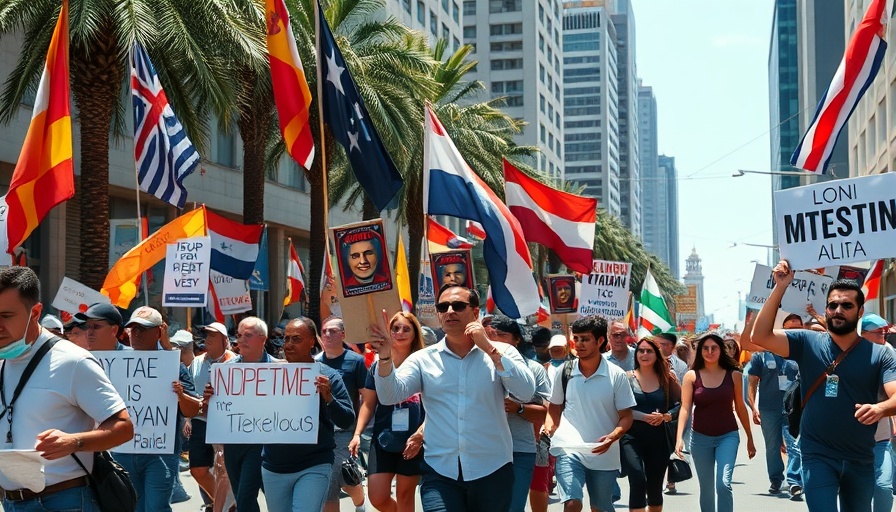
Setting the Record Straight: Huntington Beach's Status
In a significant update from the Department of Justice (DOJ), Huntington Beach residents can breathe a sigh of relief as the city has been removed from the list of so-called "sanctuary jurisdictions" accused of impeding federal immigration laws. This revelation comes after the confusion stirred by its earlier inclusion in an extensive list by the Department of Homeland Security (DHS), which was quickly removed due to errors.
The Stakes of Sanctuary Status
The DOJ's latest list highlights 35 cities and counties believed to actively hinder immigration enforcement, raising concerns about public safety and federal compliance. Huntington Beach's earlier categorization was met with significant backlash, particularly after the City Council publicly declared the city a "non-sanctuary" jurisdiction. Mayor Pat Burns underscored this stance, arguing for the enforcement of federal immigration laws and criticizing how the state’s sanctuary policies are perceived and manipulated.
The Local Response and Broader Implications
With Mayor Burns at the forefront, local leaders have expressed gratitude for the DOJ's correction, suggesting a return to clarity regarding Huntington Beach's immigration policies. The mayor pointed out that the state’s sanctuary status, leveraged by Governor Gavin Newsom, might not serve the community’s best interests. Instead, he contended that illegal immigration puts strain on local resources, such as medical care and welfare systems—a sentiment echoed by constituents who seek a balanced approach to immigration.
Sanctuary Policies: A Political Tool?
Governor Newsom has often framed sanctuary policies as a necessary response to federal inaction on immigration reform. His recent comments asserting the need for changes at the federal level hint at potential shifts in California's political landscape. As local and state governments, alongside federal authorities, navigate these murky waters, Huntington Beach’s experience serves as a microcosm of the broader national debate over sanctuary laws.
Notable Omissions and Continued Controversy
Despite the DOJ's updates, inconsistencies remain in the list of sanctuary cities. For example, Santa Ana, a city that has declared itself a sanctuary, wasn't included in the latest DOJ documentation. Other Southern California cities that previously identified as sanctuary jurisdictions, like Culver City and Palm Springs, are also absent. Such omissions raise questions about the criteria used to create this list and whether it accurately reflects local policies.
The Future of Sanctuary Jurisdictions Under the Line of Fire
As the Trump administration continues its uncompromising stance against sanctuary jurisdictions—having already proposed legal action against cities like Los Angeles and New York—key questions emerge about the future relationship between federal and local authorities. Huntington Beach's case underscores a critical need for persistent dialogues on immigration laws that consider both legal frameworks and community impacts.
Action Points for Residents
Residents of Huntington Beach are encouraged to remain informed and engaged in local governance as the landscape continues to evolve. Understanding the implications of these changes is essential, as it directly affects public policy and community well-being.
The landscape of immigration policies is complex and often contentious. In Huntington Beach, the experience of being wrongfully identified as a sanctuary city serves as a reminder for community members to stay aware of local policies and their ramifications. Since immigration issues remain near the forefront of national conversations, being informed can help local populations ensure that their voices and needs are heard.
Join city meetings, engage with local leaders, and familiarize yourself with the ever-changing laws that affect our community.
 Add Row
Add Row  Add
Add 




Write A Comment